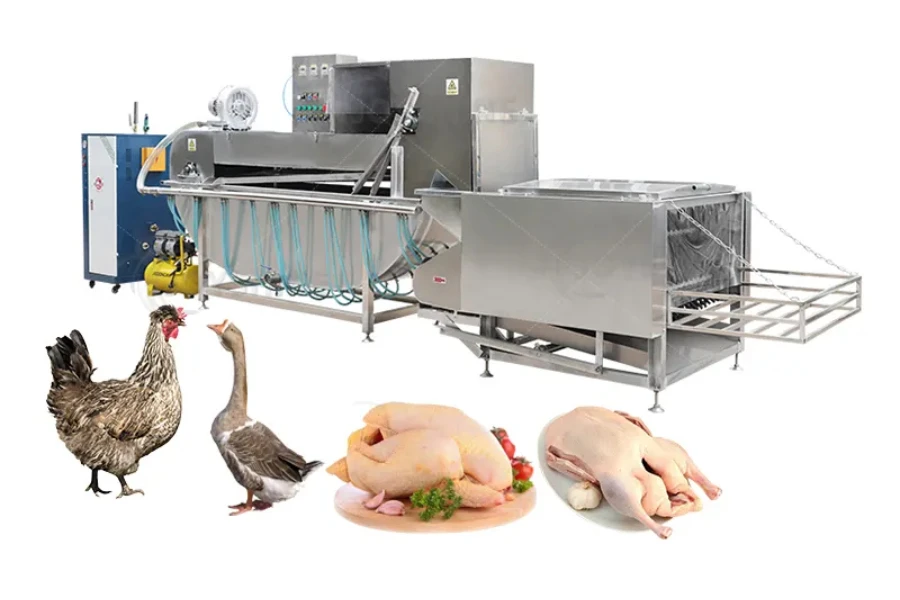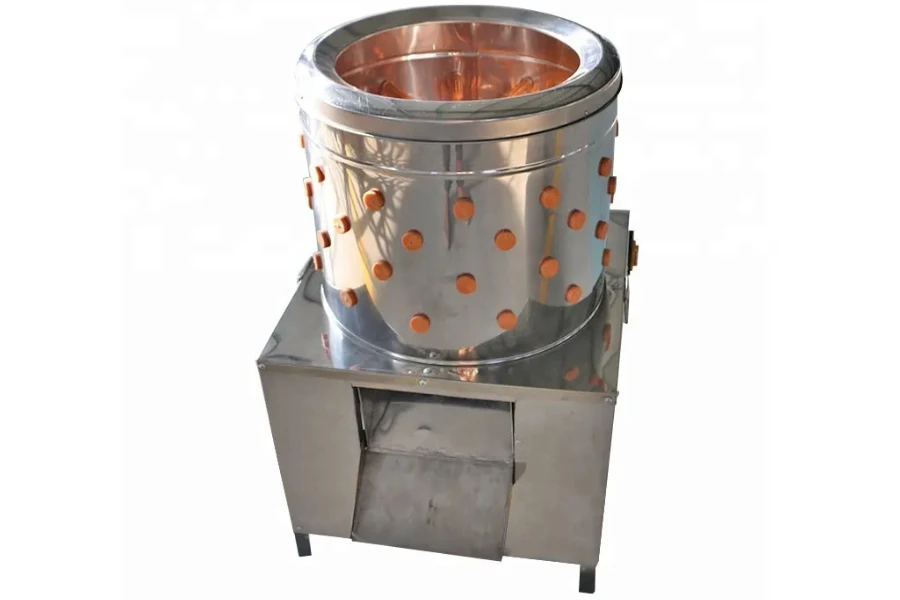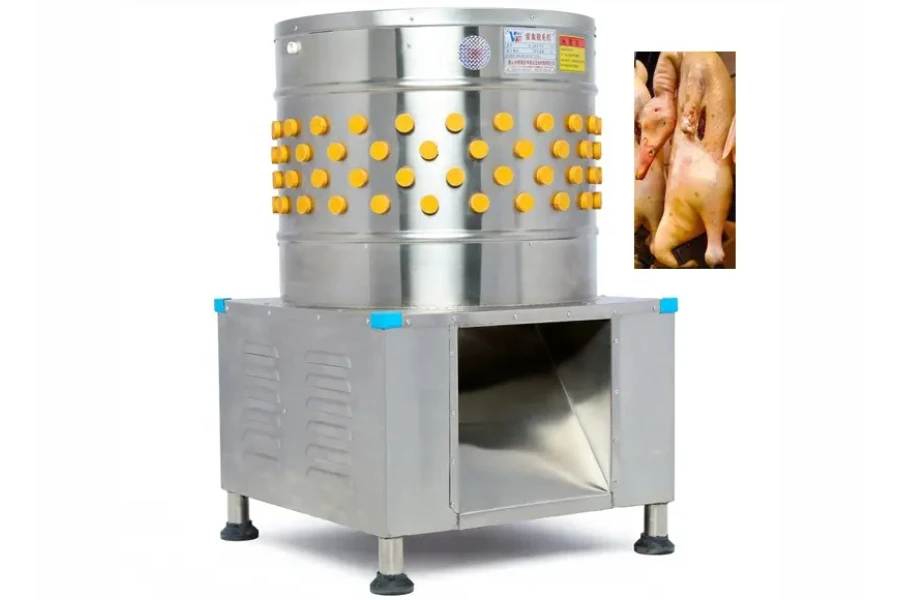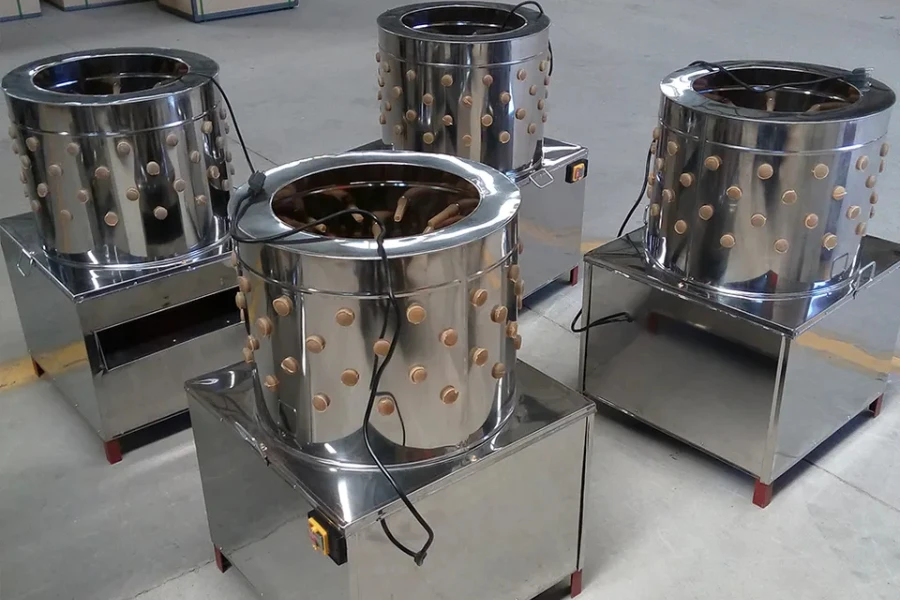Chicken plucker machines are used to remove feathers from chickens efficiently and quickly. A lot of time and effort is saved when the right chicken plucker machine is used to do the job. If you are looking to buy chicken plucker machines, you will find many brands of machines in the market. These chicken plucker machines come in different sizes and have varying capabilities.
In this article, we’ll also look at the chicken plucker machine market share and size before providing an overview of the different types of machines available and how to select the right one for you.
Table of Contents
Overview of chicken plucker machines
Types of chicken plucker machines
A guide to buying the right chicken plucker machine
Summary
Overview of chicken plucker machines

A report published by Future Market Insights shows that in 2022 the global chicken plucking machine market was valued at US $758.8 million. With a year-on-year growth rate of 3.8%, the figure is expected to reach US $789.2 million by the end of 2023. Between 2023 and 2033, the chicken plucking machines market is expected to grow at a CAGR of 4.0%, meaning by 2033, the market will have a value of US $ 1168.2 million.
Factors that have led to an increase in demand for chicken plucker machines include the high demand for a variety of chicken products and the need to improve productivity and reduce the cost of labor across slaughterhouses and poultry farms. Additionally, the growth of the hospitality industry is causing an increase in the sale of chicken plucking machines.
Regions with high demand for chicken plucking machines include Europe, North America, Asia, and Latin America.
Types of chicken plucker machines
1. Finger plucker machines

Finger plucker machines use soft rubber fingers to extract feathers from chickens delicately. As the fingers rotate, they pluck out the feathers while leaving the skin of the chicken unharmed. This method is ideal for those who require a gentle and effective way to remove feathers without causing skin damage. Electric-powered finger pluckers are available in multiple sizes to accommodate varying levels of poultry production.
2. Rotary plucker machines

Rotary plucker machines extract feathers from chickens using a drum that rotates with rubber fingers. The rubber fingers smoothly and effectively remove the feathers as the drum rotates. The rotary plucker machine is well-suited for those who need to process more chickens. Rotary pluckers are available in electric or gas-powered models, and the size and speed of the machine can be adjusted to meet varying requirements.
3. Feather plate plucker

Feather plate plucker machines utilize small plates featuring rubber fingers to eliminate feathers from chickens. The plates spin, and the rubber fingers pluck out the feathers while the chicken is held against them. This type of machine is appropriate for those with a moderate to high number of chickens to process. Feather plate pluckers come in electric or gas-powered models and are typically simple to clean and maintain.
A guide to buying the right chicken plucker machine
1. Capacity
Buyers should look for chicken plucker machines that efficiently handle the chickens required. Check the machine’s specifications to know the number of chickens it can accommodate at once. The average capacity of chicken plucker machines ranges from two to six chickens per cycle. Choosing the right capacity will make the plucking process efficient and effective, saving time and effort in the long run.
2. Plucking speed
Plucking speed is another essential factor when buying a chicken plucker machine. Choosing a machine with a plucking speed that matches your poultry production requirements is important. The average plucking speed of chicken plucker machines ranges from 1,500 to 3,000 revolutions per minute (RPM), with some models capable of up to 5,000 RPM. A machine with a higher plucking speed saves time and effort during the plucking process.
3. Durability
Buyers should look for machines built to last and made from high-quality materials. The lifespan of a chicken plucker machine can range from five to 15 years, depending on the quality of materials used, maintenance practices, and frequency of use. Investing in a durable machine can save you money in the long run by reducing repair costs and the need for frequent replacements.
4. Noise
When selecting a chicken plucker machine, the noise level is also an essential factor to consider. Look for machines that have noise-dampening features or those that are specifically designed to operate quietly. It is also a good idea to check the decibel level of the machine before making a purchase. A decibel level of 70 dB or lower is considered relatively quiet.
5. Price
Choosing a machine that fits your budget but also offers the required features is crucial. The price of chicken plucker machines can vary widely, depending on the machine’s capacity, plucking speed, durability, noise level, and other features. On average, a basic chicken plucker machine can cost between US $200-$500, while a high-capacity, high-performance machine can cost up to US $1,000. Consider the features you need and the amount you are willing to spend before purchasing.
6. Power source
The chicken plucker machine’s power source is also essential when purchasing. Typically, there are two power source options: electric or gas-powered. Electric machines are popular due to their ease of use and low noise level. However, gas-powered machines may offer more power and are better suited for outdoor use.
Summary
When selecting a chicken plucker machine for your business, there are several factors to consider, including cost, durability, speed, capacity, power source, and noise level.
If you want chicken plucker machines, consider browsing Chovm.com for a wide selection at affordable prices.





 বাংলা
বাংলা Nederlands
Nederlands English
English Français
Français Deutsch
Deutsch हिन्दी
हिन्दी Bahasa Indonesia
Bahasa Indonesia Italiano
Italiano 日本語
日本語 한국어
한국어 Bahasa Melayu
Bahasa Melayu മലയാളം
മലയാളം پښتو
پښتو فارسی
فارسی Polski
Polski Português
Português Русский
Русский Español
Español Kiswahili
Kiswahili ไทย
ไทย Türkçe
Türkçe اردو
اردو Tiếng Việt
Tiếng Việt isiXhosa
isiXhosa Zulu
Zulu